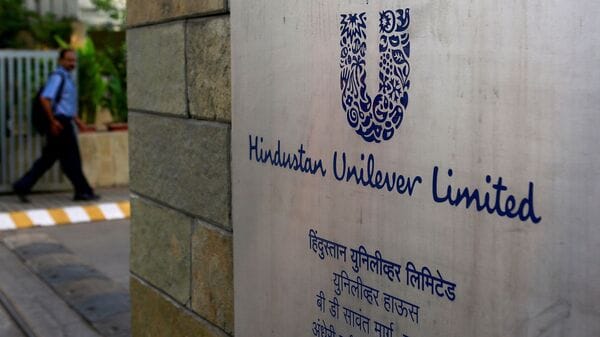 Companies
Companies
Is consumption demand recovering? HUL bosses think so

Summary
March quarter profit marginally misses estimates; HUL expects pricing growth to declineNEW DELHI : Consumption demand is recovering and will improve further if rains are plentiful, Hindustan Unilever Ltd (HUL) said on Wednesday, as volumes inched up at India’s biggest seller of soaps, shampoos and detergents.
HUL noted a “gradual" recovery in demand for household goods, even as it pointed to some pockets of weakness, especially in rural markets, where things have not yet “fully recovered".
“We have seen gradual recovery sequentially; every quarter, it gets a little bit better," said Rohit Jawa, HUL’s managing director and chief executive. “We believe that the market is slowly returning back to normal. If the macros and if the monsoons do help in the agri-economy, there is a certain factor that’s outside the control of everybody, that will also add to the change," Jawa said at a post-earnings meet at the HUL’s Mumbai headquarters.
Also read: HUL Q4 results: Net profit falls 6% to ₹2,406 crore, announces dividend of ₹24 per share
As India’s largest maker of packaged consumer goods, demand for HUL’s products is seen as a mirror to overall consumption demand in the economy.
Below Estimates
March quarter profit fell slightly short of Street estimates, 5.72% lower than a year earlier, as expenses rose. Net profit stood at ₹2,406 crore against last year’s ₹2,552 crore, the company said in a statement to stock exchanges.
Revenue from operations at the maker of Lux soaps and Kissan ketchups was down marginally at ₹14,857 crore from ₹14,893 crore a year earlier, while expenses rose 0.89% to ₹11,813 crore.
Also read: Axis Bank Q4 Results: Net profit at ₹7,130 crore, NII rises 11.5% YoY
A Bloomberg survey of 26 analysts had estimated HUL to report a profit of ₹2,470 crore. Standalone revenue estimates stood at ₹15,050 crore.
The company reported 2% underlying volume growth and a 1% value growth during the March quarter; volume growth showed no improvement from the December quarter.
Gross margin improved 350 basis points from a year earlier. “We continue to focus on building back our gross margins through improved price coverage, mix and net productivity initiatives. A&P (advertising and promotion) investments increased 200 bps as we continued to step up investments behind our brands. Ebitda margin at 23.4% declined by 30 bps primarily on account of 60 bps impact from termination of GSK consignment selling arrangement and investments in long-term capabilities," the company said in its earnings announcement.
Demand recovery
The HUL management sounded hopeful of continued recovery in demand.
High inflation over the past two years has eaten into household budgets, especially among poorer families. Companies like HUL have also been compelled to raise prices to protect margins. While this has helped them drive revenue and report pricing-led growth, it came at the cost of volumes.
As commodity prices came down, HUL slashed prices in key categories such as soaps. As a result, the company expects to report pricing growth to turn negative in the near term.
“We expect FMCG demand to continue improving gradually. Forecast of above normal monsoons, and improving macroeconomic indicators augur well. We expect our price growth to see a low single-digit decline in the near term. If commodity prices remain where they are, we envisage price growth to plateau in the mid-term and become positive—in low-single digit range— by the second-half of this financial year," chief financial officer Ritesh Tiwari said.
Prices of crude oil, crude palm oil and tea significantly influence the company’s commodity basket.
“At this stage, commodities are benign and we’ll see what happens going forward," he added.
The company reported a 1% rise in underlying sales growth in its home care revenues—underlying sales growth (USG) refers to the increase in turnover for the period, excluding any change in turnover resulting from acquisitions, disposal. Meanwhile, the beauty and personal care category reported a 2% dip in USG. Foods and refreshment had a USG of 4% with flat volume growth.
Rural outlook
Commentary on rural demand remained vague. These markets, which draw significant business for consumer goods makers, have remained depressed for several quarters now.
For HUL, urban markets continued to outpace rural markets in the March quarter.
Also Read: India's consumer goods sector longs for a rural revival
“So, overall demand for rural, I would not say it has fully recovered, but the gradual recovery that we were expecting—that we have started to see. Even this quarter, for example, was better than the previous quarter in terms of overall demand situation in rural. Overall macros are looking a little better. I’m hoping that a quarter or two down the line, with a better monsoon and continued good macro, the recovery should continue to happen," he added.
For the full year, revenue was ₹59,579 crore with a USG of 3%. The HUL board proposed a final dividend of ₹.24 per share, subject to approval of shareholders. Together with interim dividend of ₹. 18 per share, total dividend for the year amounts to ₹. 42 per share, an increase of 8% versus 2022-23.

